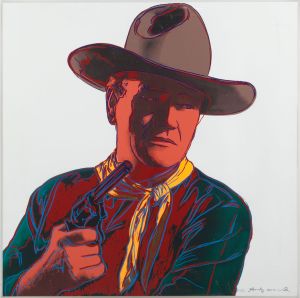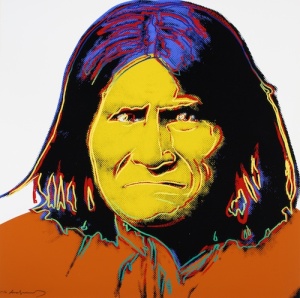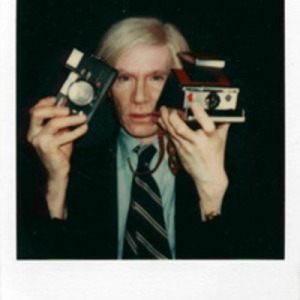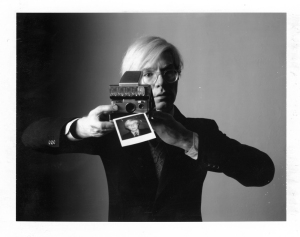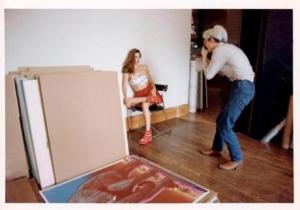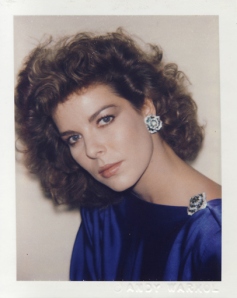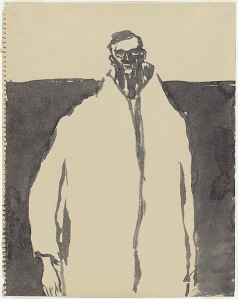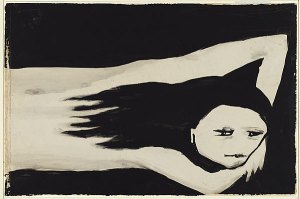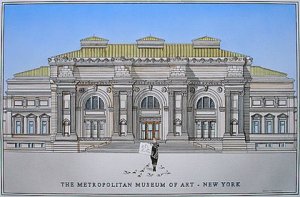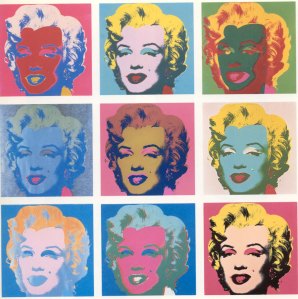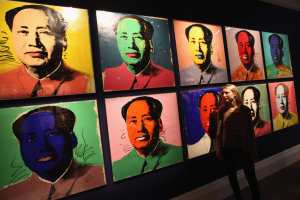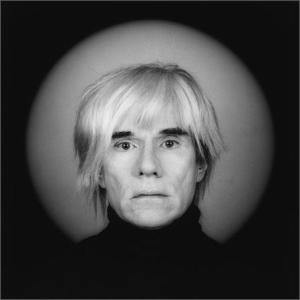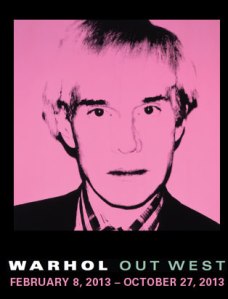In 1986, Andy Warhol embarked on a new series of screenprints which responded to his fascination with the myths and legends of the American West. Warhol appropriated photographs from movies and other sources as he began to codify the West in visual terms. Warhol’s effort to “focus” his gaze toward the American West resulted in a suite of 10 images which each had a limited print run of 250 (signed and numbered by the artist). G. R. Swenson, in Collage (1965), offered the following comment regarding Pop Art artists like Andy Warhol and their penchant for cliches and stock responses. “It is the most common cliches, the most comon stock responses which we must deal with first if we are to come to some understanding of the new possibilities available to us in this brave and not altogether hopeless new world.” Do you believe that Warhol’s Cowboys and Indians is a suite of screenprints that are “cliches and stock responses” to the myths and legends of the American West? Your thoughts?
Andy Warhol, John Wayne (from the Cowboys and Indians Suite, 1986)
Andy Warhol, Geronimo (from the Cowboys and Indians Suite, 1986)

